The content of the article
Mango is a delicious and juicy fruit that is loved by many Russians. And if in some southern countries mango is present in the daily diet, for us it is still exotic. However, if desired, the mango tree can be grown at home. If you want to grow a tree on the windowsill of the house - be prepared for the fact that it is unlikely to bear fruit. You can only grow an ornamental plant with oblong long leaves that look like a palm tree. If you wish, you can plant a mango sprout on another fruiting tree on the site, but first things first.
How to plant mangoes
It is best to plant the plant, of course, by a shoot. However, finding a mango seedling is not easy, and it costs a lot. Therefore, we will consider the option of growing mangoes from seed.
- To get started, head to the store and buy medium-sized mangoes without any damage or defects. The fruit must be ripe, so that the flesh is easily separated from the bone.
- The hard bone must be carefully chopped and the bean core removed from it. Sometimes inside the bone there are several cores, of which the most even, green and largest are chosen. If the bone is very hard, you do not need to take risks and beat it. Otherwise, you may damage the kernel. In this case, you just need to put a bone in a glass of water at room temperature and leave for 2-3 weeks in a warm, bright place. Change the water every 2 days so that it does not foul. By the end of the first week, the bone will hatch, and after 15 days a sprout will appear.
- Before planting, the seed can be soaked in fungicide for several hours. This will prevent its infection with fungus and infection.
- For planting you will need a pot. Since you are planting a regular mango that grows several meters long, it is best to take a large pot right away. This is done in order to transplant and injure the future tree as rarely as possible in the future.
- Drainage pours out to the bottom of the pot. It can be expanded clay stones or shards from a brick. Drainage is very important when planting plants and trees that love a warm climate. Drainage protects the plant from stagnation of water and rotting roots.
- For planting, ordinary soil is used. Take 5 parts of garden soil, add one part of chernozem and one part of sand. Mix everything and put in a pot.
- If you plant a bare seed, without a seed and a sprout, you cannot know for sure where it has a bottom and where is a top. Therefore, the seed is best planted sideways. If a sprout has come out of the bone, definitely the seed should be planted vertically.
- Mangoes do not need to be planted too deep. 2 cm of ground sprinkled on top will be enough. And yet - the soil should be of medium acidity.
- After planting, the soil should be well poured with settled water. In general, plants need to be watered only with settled water. So you can protect them from lime and chlorine, which is in tap water.
- Place a pot of seeds on the sunny side. Cover it with cellophane or a cut plastic bottle - this is an imitation of a greenhouse so that the sprout sprouts faster.
- From time to time, raise the greenhouse so that air enters the sprout, and it does not rot.
Within a few weeks, when the sprout rises and begins to give the first leaves, the greenhouse can be removed. Further, for the tree to grow strong and large, it needs proper care.
How to care for mangoes
- Given the natural habitat of the plant, it needs regular watering. You need to water the mango tree every 2 days, it does not tolerate dry soil and air.From time to time, the plant needs to be sprayed, but often this should not be done, its leaves can get rot and fungus.
- As noted, a tree loves bright light and warmth. It is best to keep the pot on the sunny side.
- If you want to plant a plant in open ground, this can be done in a few months, when the tree is strong.
- Mango tree needs to be fertilized periodically. It is best to feed the plant with biohumus or nitrogen compounds. If the mango grows on open ground, it is fertilized twice a year - in spring and autumn with organic materials. To do this, take ordinary cow manure, which is poured with water. After a few days, this liquid can be watered on the tree. This is a very useful, nitrogen-containing product.
- In winter, when the weather is not happy with sunny days, the plant on the windowsill must be "fed with light." To do this, a fluorescent lamp is placed above the tree, which must be turned on in the daytime and turned off at night.
- In the summer, mangoes can be taken to the outdoor terrace or balcony to fresh air.
These simple plant care rules will help you grow a strong and viable mango tree.
How to prune mangoes
As you recall, the mango tree is very tall in nature. In natural conditions, it rarely grows less than 10 meters. The average height of the mango is 40 m. Therefore, for planting, it is best to choose dwarf varieties of trees, which, in turn, are also far from small in room conditions.
One way or another, a tree needs pruning. In general, mangoes tolerate pruning well, but it is best to prune a tree while slowing its growth. This is observed in the autumn-winter period. Pinch the mango tree after its growth is 1 meter. Cut places must be treated with garden var. This is a special tool based on paraffin, rosin, wax and other substances, which protects the cut from getting into the germs, dirty water. If you treat the slices with garden varieties, they heal faster.
How to grow mango in a personal garden
If you transplanted mangoes into the open ground, be prepared that the tree can die even with slight frosts. But trying to grow mangoes on your own is still worth it. To do this, a mango twig needs to be grafted onto another fruit tree.
For this, a stronger and adult mango tree, which has grown on your windowsill, is suitable. A branch with a kidney is cut from it, right with a piece of bark. Then on the site you need to choose a fruit tree, to which you will plant mangoes. The tree should grow under the sun.
A section is made in the selected tree in the form of the letter "T". A branch cut from a mango is inserted into the lower part of the cut and everything is tightly tied with a soft cloth. After this, the tree needs to be watered abundantly and wait for the branch to take root.
If the mango is accepted, then after 2-3 years the sprig will bloom. And then three months after flowering, you can enjoy the vivid taste of the mango-grown mango fruit. But only on condition that over the years the grafted branch does not freeze.
Mango tree
If you live in Russia, then the probability of getting mangoes is minimal. But do not despair, because mango is an incredibly beautiful tree. Depending on age, it can change the color of its leaves. Young leaves are light green, a mature tree has dark leaves. Sometimes mango leaves can turn purple - there's nothing to worry about.
Mango blooms incredibly beautiful - flowers are usually yellow or red, they hang down in bunches, forming magnificent bouquets.
The mango fruit is incredibly healthy. It contains a huge amount of vitamins. With a relatively low calorie content, mangoes are a satisfying fruit. It is successfully used in nutrition, as a product for weight loss.Regular consumption of mangoes can significantly strengthen the immune system and improve vision. Mango is a natural antidepressant. If you constantly eat this fruit, it means that your body is less susceptible to stress and depression. And a piece of mango, eaten before the night of love, can increase the potential of your partner.
Mangoes are not only eaten fresh. Delicious candied fruits are made of it. In addition, mango is a popular and effective product in cosmetology. This fruit successfully moisturizes and tightens the skin.
If you grow mangoes at home, you need to know that a broken branch gives poison juice. Therefore, if there is an animal at home (for example, a cat), you need to be careful not to let it feast on the leaves of the mango tree.
To grow real mango on your windowsill is quite possible. Patience, proper care and care will help you grow a whole exotic tree from an ordinary bone. Experiment and delight yourself with new floricultural success!
Video: how to grow a mango from a bone

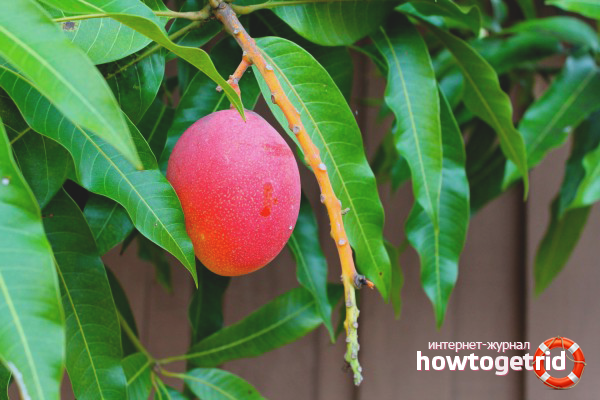
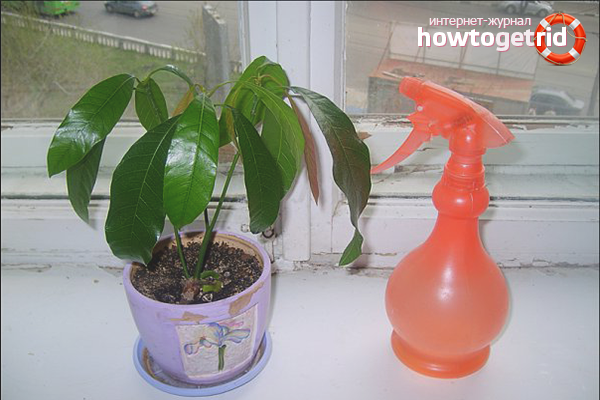
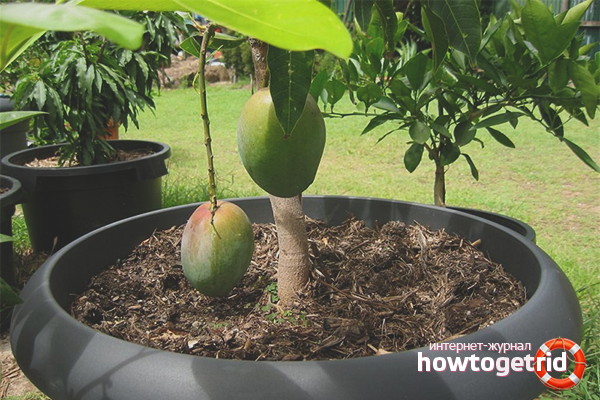
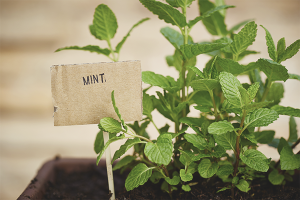
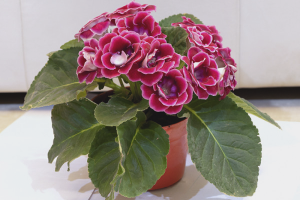
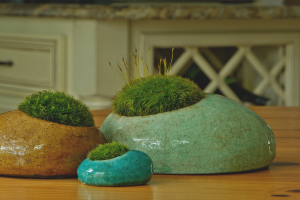
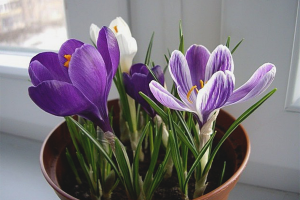

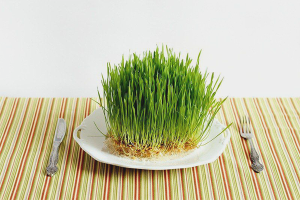
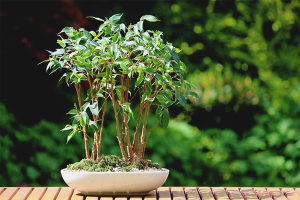
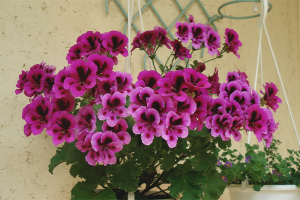
Submit